Welcome to the May 2022 issue of the Global Washington newsletter.
IN THIS ISSUE
- Letter from our Executive Director
- Issue Brief: For Children, Clean Water Means Everything
- Organization Profile: A Q&A between Stephen Sara, Senior WASH Advisor (Team Lead), Save the Children, and Kristen Dailey, Executive Director, Global Washington on May 16, 2022
- Q&A: Q&A with Americares WASH Technical Advisor Matteo Cinquemani
- Welcome New Members
- GlobalWA Member Events
- Career Center
- GlobalWA Events
Letter from our Executive Director
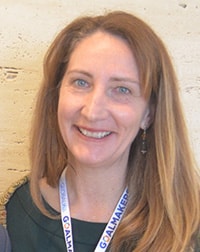
My kids are similar to many kids in the U.S. in that they are on athletic teams, go to school, and live in a house with running water. They get clean water at school, and when they remember their water bottle, they have access to good water while playing sports. However, it’s estimated that 450 million children around the world do not have access to clean water, which is detrimental to their health, education, household income, and overall community well-being. Climate change and the rise of global conflicts exacerbate the limited resources we have, and children bear the greatest burden.
Sustainable Development Goal 6 outlines specific targets to not only increase access to clean water, but also preserve and improve water-related ecosystems and freshwater supplies. Several Global Washington members are working on SDG 6, and in particular, bringing clean water to children. The ripple effect of these solutions can advance goals for education, hunger, climate action, and reducing poverty. Join me in learning more about these Goalmakers and proven organizations.
In the coming months, Global Washington is planning a few in-person events to bring our global development community together. One event will be a workshop on effective usage of social media for global development organizations. Find out more here. Also, save the date for our Goalmakers Annual Conference on December 7 and 8. The first day will be online and the second day will be in-person in Seattle. I hope you can join us!

Kristen Dailey
Executive Director
Issue Brief
For Children, Clean Water Means Everything
By Joanne Lu

Tanzanian child drinking water. Photo: Magdalena kula manchee, Unsplash.
For children, clean water means everything. It means staying healthy from diseases. It means having enough food to eat. It means the opportunity to go to school and improve their futures. Water, for children, means life.
However, according to a 2021 analysis by UNICEF, more than 1.42 billion people around the world, including 450 million children, live in areas of high or extremely high water vulnerability. These are areas where physical water scarcity overlaps with poor water service levels, leaving the communities there to depend on surface water, unimproved sources or water that takes more than 30 minutes to collect. In other words, 1 in 5 children doesn’t have enough water for their daily needs, including drinking and practicing basic hygiene.
“When wells dry-up, children are the ones missing school to fetch water. When droughts diminish food supplies, children suffer from malnutrition and stunting. When floods hit, children fall ill from waterborne illnesses. And when water resources decline, children cannot wash their hands to fight off diseases,” UNICEF Executive Director Henrietta Fore said in a press release.
By some estimates, every 90 seconds a child dies from a water-related disease.
The world’s water crisis, Fore says, is here. Unfortunately, climate change is only making it worse. Dry seasons are lasting longer. Rainy seasons are becoming shorter and more intense, often resulting in destructive floods and other weather disasters that wipe out crops and water systems. Half of the global population could be living in areas facing water scarcity within three years, according to UN estimates. By 2040, a quarter of the world’s children will be living in areas of extremely high water stress.

African children in line for water. Photo: Jeff Ackley, Unsplash.
This intensifying crisis is why many water organizations like Friendly Water for the World are moving away from digging wells and adopting more sustainable options. As aquifers are being drained, people are digging deeper and deeper wells, in some places tapping into dangerous levels of arsenic and fluoride and poisoning entire communities, especially children. Often, wells are abandoned only 2-3 years after they are built because they have broken down or require too much maintenance that the communities cannot afford.
Instead, Friendly Water for the World is building eco-friendly rainwater catchment systems that store as much as five times as much water as average plastic tanks, last 2-3 times as long, and cost 60% less. These tanks are primarily built at schools – as well as some administrative buildings and markets – eliminating the need for students to collect water. One principal says that before the rainwater catchment system was installed at his school, half of the students had to leave during the day to fetch water, interrupting their lessons.
But those children are the lucky ones, who even have the opportunity to attend school. In most countries, the household duty of collecting water falls on women and girls, which deprives them of the time and opportunity to attend school or build livelihoods.
To eliminate that burden, Water1st focuses its efforts on piping water directly to every home, as well as schools, health clinics, and community centers. Not only does it save time, relieve a physical burden, and create opportunities for women to earn income and children to go to school, but it also allows for better hygiene from high-quality toilets, showers, and faucets.
Sustainable Development Goal 6, Water1st notes, seriously raised the bar in terms of defining access to clean water. Basic water services – defined as an improved water source not more than 30 minutes away (round-trip) – fall far short of “safely managed” drinking water services, which are “located on premises, available when needed and free from contamination.”
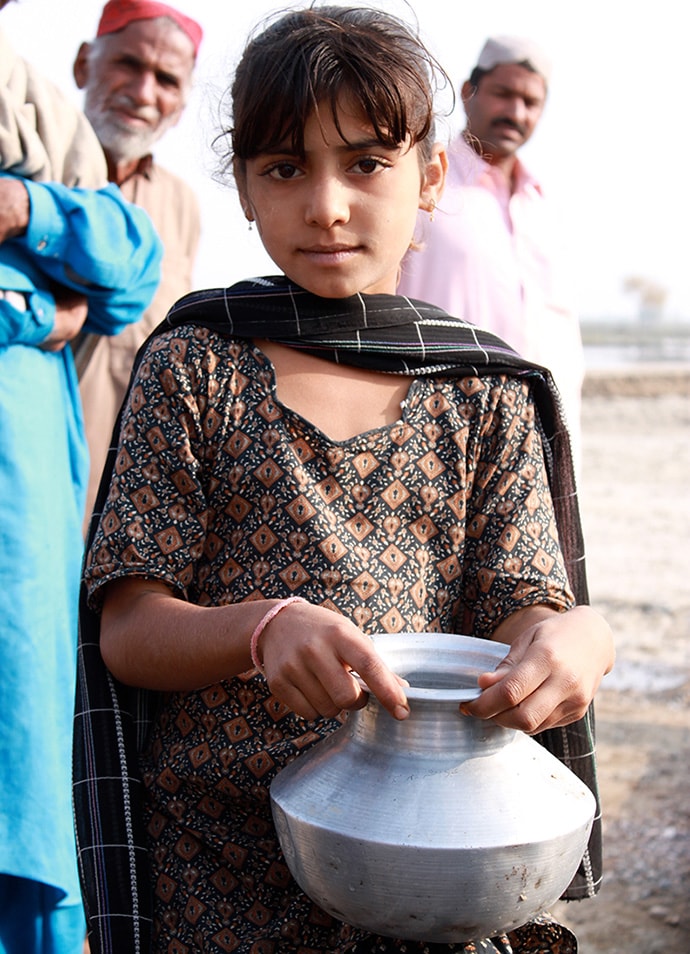
Child collecting water, Sindh, Pakistan. Photo: Department for International Development (CC BY 2.0)
Save the Children is also focused on bringing change directly into homes. Instead of broad community-centered programs, their flagship Clean Household Approach works at the household level to prevent childhood infections and improve child nutrition, especially in children under age 2. It especially helps caregivers reduce the amount of environmental contaminants that children ingest through better water, sanitation and hygiene (WASH) products and practices, including safe disposal of human feces, safe storage and treatment of drinking water, hygienic handling and safe storage of food, preventing infants and young children from consuming soil and animal feces, and handwashing with soap.
The latter, of course, became a primary concern during the pandemic, which had a profound impact on child welfare. Many of those aspects were discussed during Global Washington’s Annual Goalmakers Conference in December 2021, including both the negative and positive impacts on school WASH programs and water supply. School closures and gathering restrictions, for example, interrupted Splash’s hygiene behavior-change trainings, leading to the improper use of hygiene and sanitation facilities. Once schools re-opened, Splash was able to partner with local governments to make sure schools had soap and uninterrupted water supply for hand-washing stations – services that can and should continue long after COVID-19 no longer dominates public discourse.
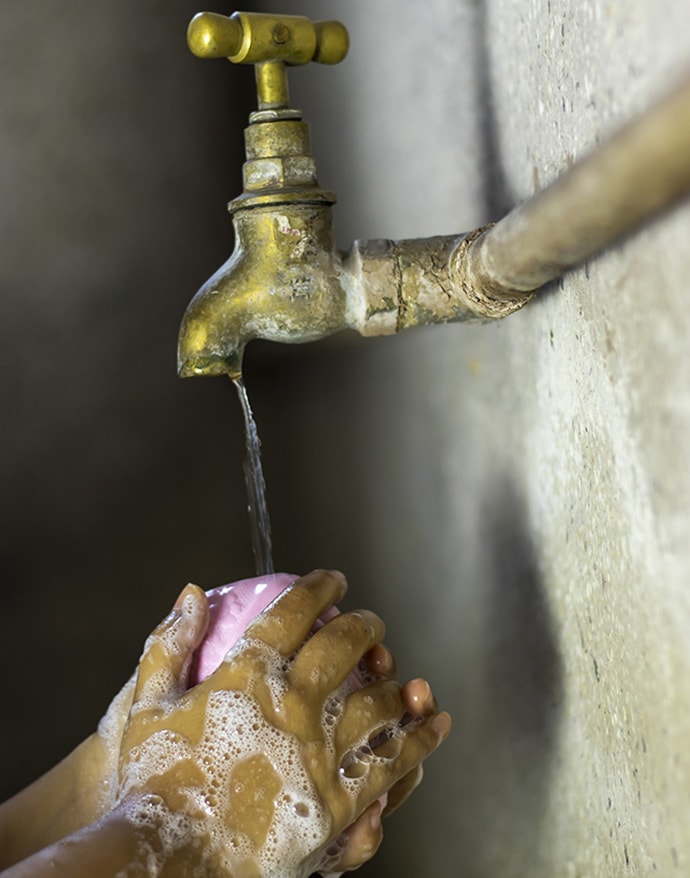
Child washing hands at school, India. Photo: soumen82hazra, Pixabay.
WASH services and programs are also essential for preventing the spread of other deadly diseases. In conflict-affected areas, like Yemen, the breakdown of WASH services have led to the deterioration of population health, especially among women and children. There have been several outbreaks of cholera, for example, as well as other infectious diseases, and the country is at risk of a polio resurgence.
In light of these needs, the Yemen Relief and Reconstruction Fund has prioritized water projects, including solar-powered water purification and desalination systems for three hospitals in Hodeidah, the area that has been most-affected by infectious diseases and malnutrition. They are also providing communities with water filters, water tanks, and water-trucking services.
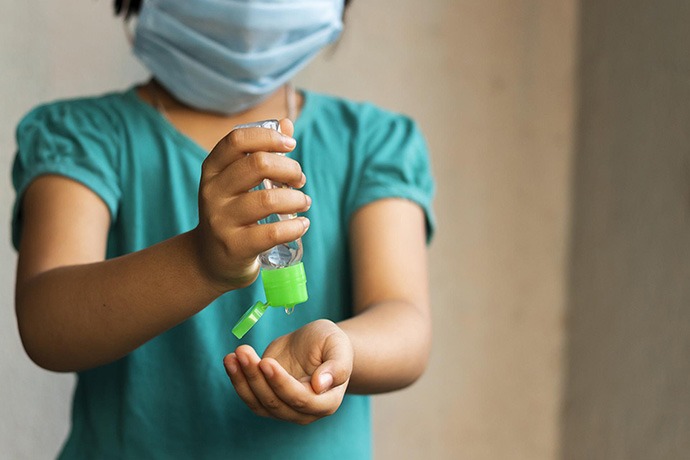
Child, India. Photo: soumen82hazra, Pixabay.
Amid a global rise in protracted conflicts, climate change and depleted water sources, children are most vulnerable to the risks posed by water scarcity and a breakdown in WASH services. However, with innovations in sustainable WASH products and programming, the world still stands a chance to not only curb the crisis, but improve clean water access for children and their families.
The following GlobalWA members are providing clean water and WASH programs in the communities they help in low- and middle-income countries.
Friendly Water for the World doesn’t make the rain fall, cure diseases, build schools, or plant trees. What we do is share ideas and simple technologies for capture and store rainwater, protect families from preventable diseases, make building schools easier, more inexpensively, and more environmentally sound. Perhaps just as critically, we make it possible for communities themselves to choose the technologies and approaches that best fit their needs. In one community of 10 villages, the area leader said that in the 17 years he was there, Friendly Water for the World was the first group that had ever come and asked them what they wanted before starting work, governed by the communities themselves.
We have launched a program in western Kenya to build 60 new rainwater catchment tanks, each holding 25,000 liters. Most tanks are attached to schools formerly without any access to water at all. Currently, many students have to leave their classrooms to gather water for the school, and also for their families. Some end up dropping out altogether to become part of the constant “long walk to water.”
Made of interlocking stabilized-soil bricks, tanks are fabricated onsite with locally available materials. They are not fired using increasingly scarce wood resources, and require no mortar. We’ve trained masons and brickmakers, also making it possible for them to support their families.
Each school and each project has to have a sustainability and maintenance plan written and approved by the community itself.
Rotary District 5030 Clubs have long been active in providing Clean Water, Sanitation and Hygiene Training solutions in developing countries, in both Urban and Rural areas. We currently have 15 projects being implemented in Africa, South and Central America and the Caribbean, with an additional three water projects in draft stage, and four more being authorized. These projects range in size from $30,000 up to $800,000.
One Urban project provided Clean Water, Hygiene Training and improved Sanitation in 31 Government schools in Addis Ababa, Ethiopia supporting over 31,000 students at a cost of over $485,000. This project will eventually be expanded by our partners to over 400,000 students.
Our projects in rural areas include providing Clean Water and/or Sanitation facilities to 14 rural schools in Ethiopia; Clean Water, toilets and hand washing stations at 4 schools serving over 625 students and teachers in rural towns in Guatemala, and a solar powered well for a fistula hospital in Uganda. We are also providing wells and solar powered pumping stations in a Senegal village; handwashing stations for 22 schools in eSwatini; a Water storage and delivery system for a regional hospital in Cameroon ; repairs and improvement to a septic system at a home for children in Mexico; Plumbing and fixtures for an orphanage in Tanzania; and a Reverse Osmosis system for a clinic and families in Haiti .
Save the Children works for a world in which every child affected by an emergency has access to a safe water supply and adequate sanitation facilities. We work towards this vision by: 1) Reducing morbidity and mortality of children exposed to poor WASH conditions; 2) Enhancing hygiene practices in schools; and 3) Designing WASH programming in a way where children are protected against dangerous situations and physical environments.
One of Save the Children’s signature clean water programs is distributing water purification materials and water containers to increase access to safe water in Kenya, Ethiopia, Nigeria, Somalia, and South Sudan. With the support of Procter & Gamble, we’re integrating the distributions into our existing health and nutrition, gender equality, livelihoods, education and humanitarian response work . To learn more about our WASH programming, visit our website.
Water is piped directly to every home, school, health clinic, and community center, assuring each household receives the maximum health benefits of clean water, a toilet, and a shower. Piped water to the home ends the walk for water for women and girls. With the constant burden of water fetching and illness lifted, women can earn an income, families begin to save money, and girls can go to schoo l.
All Water1st projects integrate piped water, toilets, and hygiene education. Studies have consistently shown that together — water, toilets, and hygiene — stop the spread of disease and save lives . When water is piped directly to the home and school, it allows for high-quality toilets and showers. Water faucets are placed in bathroom stalls for flushing, cleaning, and washing hands.
Water1st routinely visits our projects to evaluate and improve our work. Rigorous oversight ensures each project is generating the best possible outcomes. You can be confident your donation is wisely spent and making a real difference in the lives of the people we serve. Considering the industry-wide project failure rate is 35-50% after five years, we know monitoring is a worthwhile investment.
World Concern is committed to improving access to life-sustaining, safe, clean water in areas of greatest need in the world.
Whether building or rehabilitating wells, constructing sand dams, installing rainwater collection systems on homes and community buildings, or providing household water filters that remove 99% of germs, bacteria, and parasites, World Concern is implementing innovative, sustainable methods to ensure children and families are healthy and have safe, disease-free water for life.
Additionally, the cycle of sickness is broken when families understand the importance of using toilets, washing hands, and keeping themselves and their surroundings clean. We help build latrines, provide vital hygiene training and supplies, and deliver handwashing stations to communities in need.
Learn more: https://worldconcern.org/what-we-do/clean-water-health
Yemen Relief and Reconstruction Foundation
Yemen is the poorest countries in the Middle East. The country has experienced multiple conflicts that intensified around 2010, with large protests taking place in 2011, internal fighting in 2012–2014, and a war and blockade that started in 2015 and continue to date. The war and blockade have had a devastating impact on every vital sector in Yemen including public services, agriculture, and health, which faced large-scale destruction and led to significant economic loss and inflation. However, the most affected are water supply, sanitation, irrigation, and agricultural services. This led to the deterioration of population health , especially women’s and children’s health. The Institute for Health Metrics and Evaluation latest Sustainable Development Goals was published for year 2017 and shows that Yemen has a very low score of 32 and is not expected to meet any of the water and sanitation goals. The dire situation of poor water quality and sanitation has led to several outbreaks of cholera and other infectious diseases. The country made progress on polio eradication which is now at risk of resurgence.
In response to the deteriorating water situation in Yemen, Yemen Relief and Reconstruction Foundation (YRRF) prioritized water in its strategic plans . YRRF supports several projects including 1) Water purification and desalination systems using solar energy for three hospitals in Hodeidah, the most affected Governorate by infectious diseases and malnutrition; 2) providing water filters to thousands of people with no access to clean water; 3) providing water tanks and water trucking to areas hosting internally displaced populations; 4) Providing water tanks to people in mountainous areas to allow storage of clean water.
As the war in Yemen continues with little attention, especially who compared to other conflicts in the world, Yemeni children continue to suffer and a generation is at risk of falling behind. It is time to support Yemen by lifting the blockade and starting the internal dialogue for peace without external intervention. Yemenis can and will rebuild their country but need our support and help.
Organization Profile
A Q&A between Stephen Sara, Senior WASH Advisor (Team Lead), Save the Children, and Kristen Dailey, Executive Director, Global Washington on May 16, 2022
Our member, Save the Children, has a long history with clean water and WASH (water, sanitation and hygiene) programs in the international settings where they work. Steve describes the history, motivations and impact of their work, with examples and lessons learned.
Q&A
Q&A with Americares WASH Technical Advisor Matteo Cinquemani
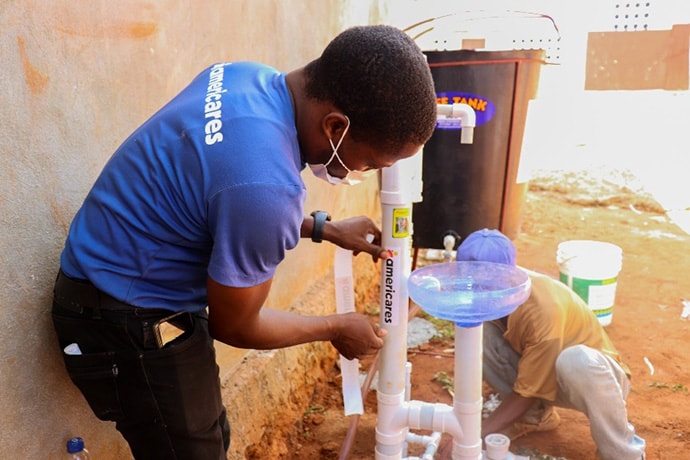
Americares installs a handwashing station at Pointe Sable, Cayemites Island, Haiti, in 2020. Photo by Almando Etienne/Americares.
1. What is your name, role, and history with Americares?
I am Matteo Cinquemani, Americares WASH Technical Advisor.
I joined Americares in 2020 to oversee and coordinate WASH projects globally, as well as to provide technical guidance and support to colleagues in the field.
2. How did Americares get started working on water and sanitation issues in international settings?
Despite being two separate sectors in our industry, Health and WASH are deeply connected. Americares is a health-focused organization that saves lives and improves health for people affected by poverty or disaster. It is virtually impossible to achieve this goal without having access to adequate water and sanitation facilities, which is not only a precondition to ensure basic hygienic conditions at a health center, but also an issue of dignity and safety for both patients and health care workers.
Americares has long addressed the issue of lack of WASH services and infrastructure in health facilities and has expanded its broader WASH projects in recent years to improve community health. A community with safe water, adequate sanitation, and a sound understanding of basic hygienic behaviors is a community with far lower prevalence of many diseases, including diarrheal disease, and skin and eye infections. At the same time, nutrition for infants and toddlers improves.
Americares installs a handwashing station at Pointe Sable, Cayemites Island, Haiti, in 2020. Photo by Almando Etienne/Americares.
3. What are the primary differences of safe water access, good hygiene, and sanitation (WASH) in America as opposed to internationally?
While parts of the U.S. such as some Native American reservations and coastal areas are facing a critical situation primarily due to a combination of poor water resource management/overexploitation and the impact of climate change, the U.S. is largely shielded from the challenges other countries face accessing safe water. Here in the U.S. and other wealthy industrialized countries we take for granted that any hospital or clinic is at the very least equipped with functioning restrooms, piped water, and adequate septic and sewerage systems. In many other countries, health care workers often don’t have access to water to practice frequent and thorough handwashing. They might have to bring their own water bottle from home or buy water in the street, and patients avoid going to the local health center because of the risk of contracting infections, or simply because they know they will not be able to use a toilet while there.
Many low-income countries lack the support structure, capital investment, sound regulatory frameworks, and private engagement needed to develop, operate, and maintain water and sanitation services for the whole population.
4. How does Americares get clean water access after a natural disaster or during a conflict?
In the aftermath of a natural or man-made disaster access to safe drinking water is critical. Much depends on the context of humanitarian response and the level of service coverage that was present before the crisis. In places like the U.S., something as simple as the distribution of bottled water is generally viable. In some extreme cases, the only realistic solution is to distribute water treatment items, such as powder packets or tabs that can quickly disinfect small volumes of raw water for human consumption.
At the international level, one quick and effective way to deliver safe drinking water to displaced populations that are congregated in camps or informal settlements is to truck in water. Another approach that is frequently adopted is to distribute WASH kits, which include buckets and chemicals that can be used at household level to treat water collected from unsafe sources.
More complex and longer-term interventions include setting up a treatment and distribution system for a whole community or rehabilitating the existing supply system.
A young boy washes hands at a handwashing station donated by Americares at Chidzanja Market in Balaka, Malawi, in 2020. Photo by Thoko Chikondi/Americares.
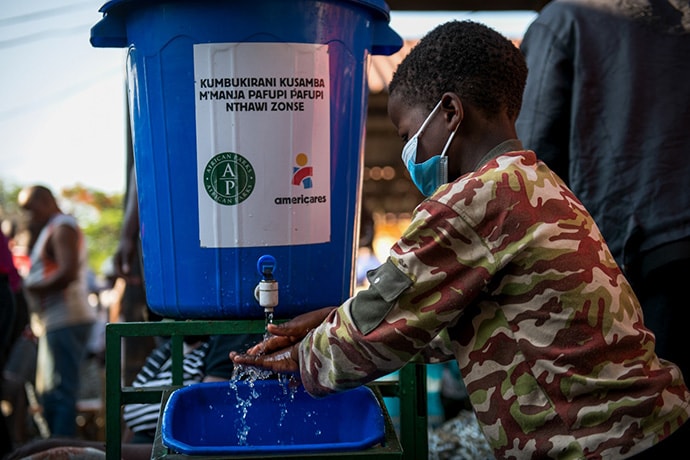
A young boy washes hands at a handwashing station donated by Americares at Chidzanja Market in Balaka, Malawi, in 2020. Photo by Thoko Chikondi/Americares.
5. Climate change is drastically changing access to water, particularly in low-income countries. How is Americares helping to solve the problem?
The current water crisis is a health crisis for most of the world’s population.
To ensure access to clean water and sanitation for all we need to see huge investment and political commitment like we have seen in China, India, and several other countries that were able to lift billions of people from poverty. Financing WASH services, as well as addressing climate change or the economic incentives to allocate freshwater to agriculture, are all extremely complex to tackle below the country level.
At Americares, we strive to improve resilience to sudden and frequent changes in water availability. We employ a variety of approaches such as using a combination of wells and rainwater harvesting to ensure reliable water for a rural health center, or increasing the storage capacity of an existing water supply system to accommodate demand during the dry season.
6. I’d love to hear more about one of Americares signature clean water and or WASH programs?
In partnership with Xylem, a leading global water technology company, Americares is improving access to water and sanitation as well as providing WASH education in health care facilities and low-income communities across more than a dozen countries. This program is showing great results, particularly with respect to the cost-effectiveness of WASH interventions, and the huge return on investment that these types of projects can achieve. Together, we have reached over 5 million people with WASH interventions in the first two years of our collaboration.
Our average project can cost as little as $20,000. Typically, we target health facilities in need of critical repairs and improvements to their water and sanitation infrastructure and we work with them to bring their facilities up to standards, whether it is by drilling a new borehole or building a septic system for the existing toilets, etc. Some of the funds are usually set aside for training and capacity development. Given the extremely high ratio of health facilities to population size, such small investments can generate a very substantial impact for thousands of patients per year.
Americares installs a handwashing station at Pointe Sable, Cayemites Island, Haiti, in 2020. Photo by Almando Etienne/Americares.
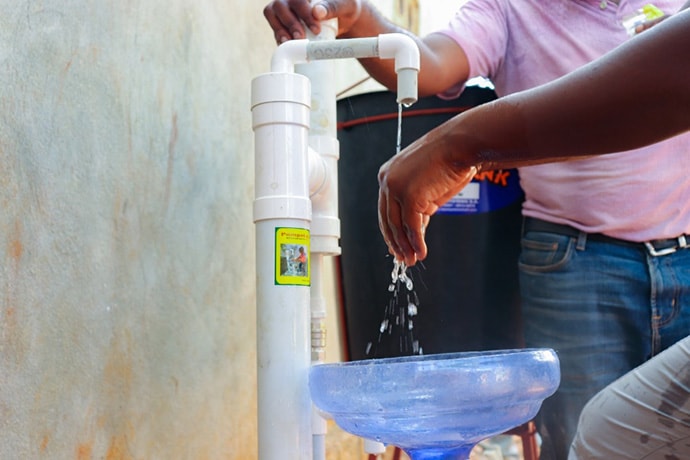
Americares installs a handwashing station at Pointe Sable, Cayemites Island, Haiti, in 2020. Photo by Almando Etienne/Americares.
7. What are the differences between providing access to clean water and WASH programs in rural versus urban environments?
A typical rural household has lower income and fewer resources to pay for services such as water. However, they have stronger relations with the rest of the community and tend to be more engaged in local politics and decision-making processes. They are more likely to personally invest in community improvements as they likely own some of the land and their family will benefit from any structural improvements. In an urban or peri-urban context, all these aspects are basically the opposite. This can greatly influence how you design a WASH project and the chances of long-term success.
The second difference has to do with the concept of “economies of density.” Infrastructure improvements—whether it is to the water or sewage system, cable internet, gas supply, or a stormwater drainage system—are generally more cost-effective in densely populated area. In rural areas, each linear meter of pipe will reach far fewer users, which in turn makes it much more expensive to finance, operate and maintain the exact same service in a sparsely inhabited area. As a result, sometimes infrastructure improvements are not always viable, and on-site technologies have to be considered. But such solutions are typically more expensive and less efficient.
Please visit the Americares website for more information.
Welcome New Members
Please welcome our newest Global Washington members. Take a moment to familiarize yourself with their work and consider opportunities for support and collaboration!
Sehgal Foundation
Sehgal Foundation has been working closely together with the S M Sehgal Foundation in India to improve the quality of life of the rural communities in India. Sehgal Foundation has five main program areas: Water Management, Agriculture Development, Local Participation and Sustainability, Transform Lives one school at a time, and Outreach for Development. These programs are supported by a skilled research team that engages in participatory research, impact assessment, and interactive dialogues to determine informed actions to achieve sustainable results. Smsfoundation.org
Member Events
May 24: YPIN- Purpose and Payday
May 27: WAC- A Retreat from Globalization?
May 30 – June 2: World Justice Forum 2022
June 5 – June 7: CARE National Conference
June 6: OutRight Action International: Celebration of Courage Gala
June12: Sukarya USA Presents GIVE 2022. RSVP: info@SukaryaUS.org
June 15: Opportunity International: Agriculture Finance Webinar
June 21 – June 22: Elevate – A Conference for Fundraising Events
Career Center
Executive Director, Spreeha Foundation
Chief Executive Officer, Heifer International
Climate Partnerships Manager, FSC Investments and Partnerships (FSC I&P)
Investor Relations Officer, Global Partnerships
Donor Relations Intern, Alliance for Children Everywhere
Check out the GlobalWA Job Board for the latest openings.
GlobalWA Events
June 7 Q2 2022 Final Mile meeting: The Value of Exchange Programs
June 15 Social Media Workshop
SAVE THE DATE – December 7-8, 2022: Goalmakers Conference